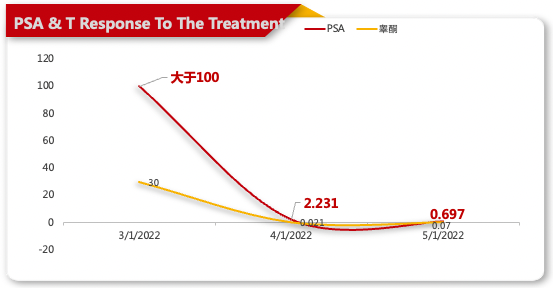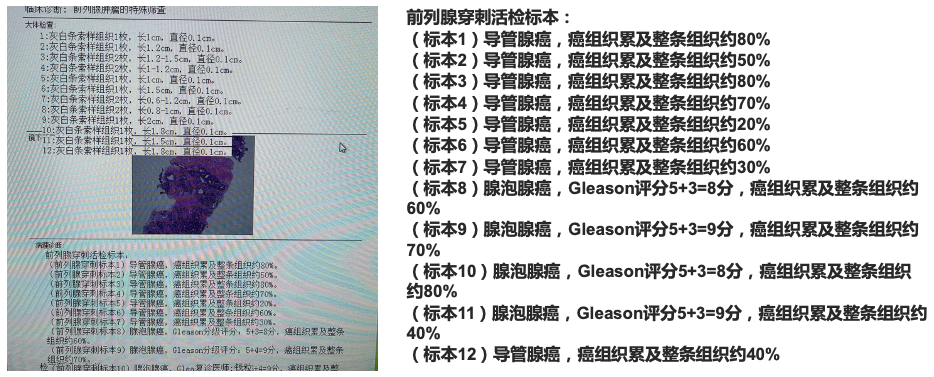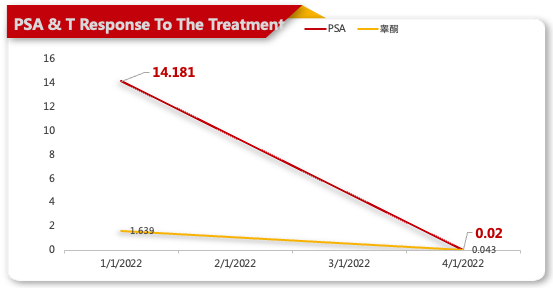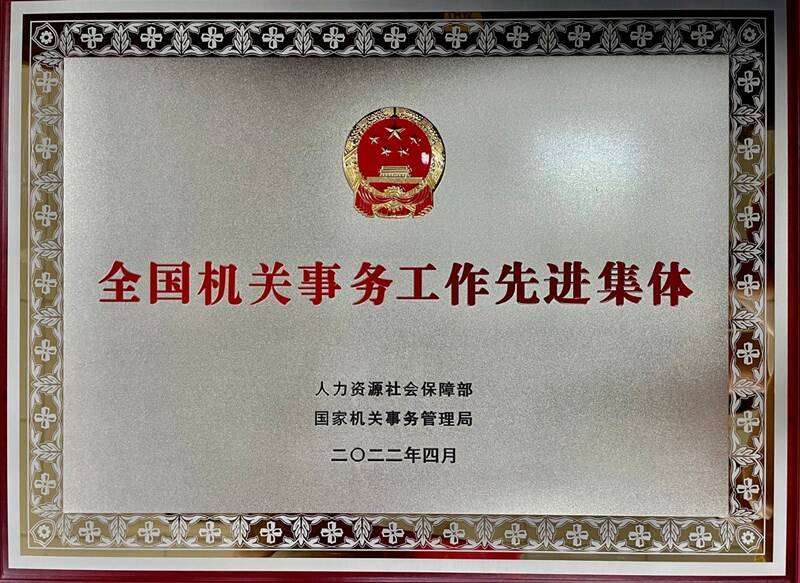PSA has a deep decline, OS long -term "Ke" period, Adt+Aparel amine brings PSA fast and in -depth response to MHSPC patients | Classic cases
Author:Cancer Channel of the Medical Time:2022.07.19
*For medical professionals for reading reference

Both cases are patients with multiple metastatic hormone -sensitive prostate cancer (MHSPC) patients. After giving Apa+androgen deprivation of therapy (ADT), the patient's prostate special antigen (PSA) responds quickly and in -depth answers. Whether it is primary progress or postoperative MHSPC patients using ADT+Aparolymids for combined treatment, they have obtained the deep rate of PSA, laying the foundation for patients to achieve long survival.
Review of the disease (1)
▎ Basic situation
Male patients, 69 years old.
On March 3, 2022, the patient came to the hospital for the hospital for more than 6 years after the root treatment of prostate cancer for more than 6 years after the root treatment of the prostate cancer.
Institute of admission physical examination: The signs of life are stable, no obvious abnormalities in the heart, lung, and abdomen examination are obvious, and the kidney area is tapped. The prostate II is swollen, the central ditch becomes lighter, and the texture is hard.
Past history: Patients have no history of diseases.
Admission laboratory inspection: PSA & 100NG/ML.
▎ Treatment passes
On November 10, 2015, the patient's outer hospital for examination reminder: TPSA37.4NG/ML, FPSA3.5NG/ML. After the puncture was clearly diagnosed, in November 11 of that year, the surgery was smooth in the root of the awarded laparoscopy prostate cancer.
Postoperative pathological diagnosis: prostate cancer glandular glandular cancer, Gleason score: 4+3 = 7 points.
On March 3, 2022, the patient came to the hospital again for "lower abdomen pain, perianal discomfort for more than two months". Admission laboratory inspection: PSA & 100NG/ML.
CT examination tips: multiple osteopathy and abdominal enlarged lymph nodes.
C Perform PET-CT check prompts:
1) After the prostate and seminal vesicles are lacking, the pelvic area is scattered in the pelvic area. The local sugar metabolism is slightly higher in the pelvic area.
2) Irregular soft tissue masses, abdominal pelvic cavity and left neck root of the pelvic pelvic tissue, the bottom left wall of the pot, the lymph nodes of the abdominal cavity and the root of the left neck, and the limited bone lesions of the whole body, consider tumor metastasis;
▎ Diagnosis
MHSPC is accompanied by multi -hair lymph nodes and bone transfer, tumor staging: T4N1M1B stage;
疗 Treatment plan and efficacy assessment
Patients after admission will be treated with ADT+Apa Tasamine in March 2022. On April 14, 2022, a follow -up review, the patient's PSA dropped from & 100ng/ml before treatment to 2.231ng/ml, a decrease of more than 98%. PSA declined further in the next month, and the patient's PSA fell to 0.697ng/ml on May 19, 2022. Realize the depth of PSA. At the same time, the patient's testosterone level also decreased significantly, from the previous & 30nmol/L to 0.07nmol/L. During the treatment, the symptoms of pain in the perianal and lower abdomen of the patient were significantly relieved from the previous.

Figure 1 PSA, testosterone follow -up results during treatment
Case review (2)
▎ Basic situation
Male patients, 69 years old.
In January 2022, patients were admitted to the hospital for "difficulty in urination".
Admission physical examination: The bilateral kidneys are not touched, the rib spine has no tenderness, the bilateral renal area has no pain, there is no tenderness on the diameter of the bilateral ureter, the bladder and pubis are not touched, and there is no tenderness.
Past history: Patients have no history of diseases.
Admission laboratory inspection: TPSA: 14.181ng/ml, FPSA: 2.929ng/ml;
▎ Treatment passes
On January 07, 2022, patients were arranged for prostate puncture. Postoperative pathology shows: (prostate puncture specimen 1-7) Direct adenocarcinoma, (prostate puncture specimen 8-11) Glason glandular cancer, Gleason score: 5+3 = 8 points;

Figure 2 The results of the prostate puncture biopsy results
PET-CT examination tips: See the right humerus, shoulder joints on both sides, right scapulas, sternum, ribs, multiple spines, left-side iliac bones, and right femoral necks. Consider the multiple metastasis of malignant tumors.
▎ Diagnosis
MHSPC is accompanied by multi -bone metastasis, tumor staging: T3N0M1B IV stage;
疗 Treatment plan and efficacy assessment
In view of the young and good physical condition, the willingness to treat surgery is extremely strong. In the end, the robot auxiliary was performed on February 8, 2022. After surgery, the patient recovered well, and the symptoms of difficulty in urination were significantly improved compared to the previous.
Postoperative pathological diagnosis: prostate: adenocarcinoma, some of which are duct adenocarcinoma, part of the glandular adenocarcinoma (GLEASON score 5+4 = 9 points), neural violations (+), adenal duct violations (+), diaphragm (+) Essence The left tip (+), the right tip of the right, the left body (+), the right body (+), the left bottom (-), and the right bottom (+). Cutting edge of urethral mouth (+), left seminal gland (+), right seminal vesicles (+), left sperm tubular (+), right transfusion pipe (+); separate "closed lymph nodes" (0/9) No cancer metastasis was seen.
Patients after surgery were treated with ADT+Aparel amine on February 21, 2022. In April 2022, follow -up review, the patient's PSA dropped from 14.181ng/ml before treatment to 0.02ng/ml. At the same time, the patient's testosterone level also decreased significantly.

Figure 3 PSA, testosterone follow -up results during treatment
Analysis
The above two cases are typical treatment cases with ADT+Apa Tasamine drug treatment for patients with prostate cancer. In 2021, the final analysis of the TITAN study released by the U.S. Clinical Oncology Society of Clinical Oncology Society (ASCO GU 2021) shows [1]: Compared with simple ADT treatment, Apahamine+ADT can significantly reduce the death of 48 % of patients' deaths. Risk, patients' 4 -year survival rate reached 65.2%. In terms of overall survival time (OS), the median follow -up is 44.0 months. The OS patients with Apahamine+ADT treatment group and the simple ADT therapy group are not reaching and 52.2 months, respectively. And after excluding 40 % of the patients with a group of patients with a cross -entry group received the influence of the combined treatment factors of Aparramine, MHSPC patients who received simply ADT treatment were only 39.8 months. The research data fully highlights the excellent effect of ADT+Aparel amine for MHSPC patients.
What's more valuable is that compared to simply applying ADT, the combination of AR amine does not increase the risk of AR mutation and reduce the choice of subsequent treatment schemes. Based on the excellent clinical data of Aparnamine, Apatamine+ADT treatment scheme was selected for the above patients. The results of the follow -up review showed that after January of the combined treatment, the PSA decreased by 98%, and PSA performed a decline in PSA in subsequent treatment and maintained stable at a very low level. ADT+Aparnamis achieves the depth and rapid response of PSA patients with MHSPC patients. The above two cases of real -world patients reflect the rapid and deep PSA effect of Aparel amine combined with ADT. It is expected that in subsequent treatment, Apahamine+ADT treatment scheme can bring more lasting survival benefits to patients.
Introduction to experts
Professor Ma Limin

Chief physician, professor and master's tutor of Nantong University Affiliated Hospital
Director of Urology and Deputy Director of Great Surgery
Deputy Director of Nantong University Surgery and Research Office
Chairman of the Urology Branch of Nantong Medical Association
Member of the Jiangsu Medical Society of Medical Association
Youth Member of the Male Science Branch of Jiangsu Medical Association
Member of the Jiangsu Provincial Society of Traditional Chinese Medicine Chinese Medicine
Member of the Jiangsu Medical Association Laser Medical Branch
State Cancer Minimally Invasive therapy Industry Technology Innovation Strategic Alliance Precision Medicine Professional Committee
Nantong Health Management Municipal -level special expert
Ph.D. in Urology Medicine, Shanghai Jiaotong University
Senior visiting scholar at the University of Dulan University Medical Center
He presided over 2 National Natural Science Foundation of China, a high -level talent project of the "six major talents" of Jiangsu Province, and a number of topics of Jiangsu, Nantong, and Nantong University. Won one second prize of Nantong Science and Technology Progress, a national invention patent, the top ten invention patents in Nantong City in 2014, the 2010 North American Medicine Year Basic Medicine Award, the third prize of Shanghai Science and Technology Progress in 2008, 2008 2008, 2008 Annual Shanghai Medical Science and Technology Third Prize, the third prize of the Shanghai Youth Thesis Competition. In the past 5 years, more than 30 papers have been published in the first author and communication authors, including 8 SCIs, including the first author "PNAS". Deputy editor -in -chief "Surgery" (Science and Technology Publishing House 2015), edited "Practical Male Science" (Science and Technology Press 2009), and currently edited by Chinese clinician magazine (core).
Expert Comment 1
Patients with prostate cancer have progressed as metastatic deprivation of prostate cancer (MCRPC) after experiencing traditional endocrine therapy. Once the patient enters the MCRPC stage, the tumor progress will be more rapid, and the efficacy and prognosis will be worse. Therefore, how to extend the progress of patients to MCRPC is the key to giving prostate cancer patients for long -term survival.
In recent years, with the widespread use of new endocrine therapy (NHT) drugs, the survival time of MHSPC patients has continued to extend, and the risk of death has also decreased significantly compared with the previous. At the annual meeting of the European Cancer Internal Science (ESMO) annual meeting in 2021, a retrospective study of patients with MHSPC patients from 2006-2019 [2] Studies have shown that the proportion of simple ADT treatment in the first-line treatment plan of MHSPC patients from 2006 to 2019 decreased, while the proportion of patients with ADT+NHT treatment increased from 0.1%to 14%. Under the new endocrine combined treatment plan, the risk of death is significantly reduced. Beginning on January 1, 2022, Apadamine has become the only NHT drug at present in my country that has the application of MHSPC's entire population and entering medical insurance. To a large extent, it has greatly increased Chinese patients' drugs for NHT treatment.
As an important indicator of convenient, fast, and easy monitoring of prostate cancer treatment effects, PSA has also been verified by countless research and clinical practice. It can be seen in the after -after analysis of Titan's research that among the MHSPC patients treated by Apabarnamine, PSA <0.2 NG/ML patients have a decrease of death risk of 83%(HR 0.17, P <0.0001) compared to unreaned patients compared to patients. And OS is significantly extended. It can be seen that the depth and long -term relief of PSA are essential for the improvement of prognosis of prostate cancer.
The treatment advantage of Aparoamine in the above clinical studies is also reflected in the actual treatment of the two patients. Faced with MHSPC patients with multiple metastatic lesions, according to the "2021 CSCO Prostate Cancer Diagnosis and Treatment Guidelines", the diagnosis and treatment group selected Apahamine+ADT treatment schemes for patients. After January of the patient undergoing joint treatment, the PSA decreased by 98%, and PSA performed performed in subsequent treatment and maintained stable at a very low level. The level of testosterone has also been significantly reduced with the treatment. ADT+Aparnamis achieves the depth and rapid response of PSA patients with MHSPC patients. It can be seen that the use of ADT+Apa Tenamine combined treatment strategy is the key to the "long survival" of the above patients. Comment expert introduction
Professor Chen Ming
Southeast University Professor, Chief Physician, Bo Director, Harvard University Postdocto

Deputy Dean of Zhongda Hospital, Southeast University, Director of Urology, Director of Urology, and Director of Robot Minimally Invasive Center
Director of the Institute of Institute of Urology and Surgery of Southeast University, Director of the Laboratory of Surgery Center
Vice President of the World Chinese Urology Medicine Association
Executive Member of the Urology Branch of the Chinese Medical Association (CUDA)
Member of the Chinese Medical Association's Urology Science Branch (CUA) and Secretary -General of the CUA Minimally Invasive Group
Chairman of the President of the Urology Branch of the Jiangsu Medical Association, the deputy chairman of the Jiangsu Provincial Urology Science Branch
Chairman of the Urology Branch of Nanjing Medical Association
The 2019 Wu Jieping Urology Medicine Award, the "Golden Bladcoscopy Award" in 2020, the Lifetime Achievement Award of the World Chinese Incites Science Society, the "Top Ten Doctor" in Nanjing, Advanced Individual of Nanjing Hospital Association, the first "Jiangsu Medical Medical Award", for many years "Medical Experts Trusted by the People" winner
Jiangsu Province "Science and Education Strong and Health" Engineering Medical Innovation Team and Leading Talents, Talent
Visestion Professor, University of Texas Medical College, MD Anderson Oncology Center
Expert Comment 2
Prostate cancer is the most common malignant tumor for men's urinary systems, and its incidence ranks second in the global male malignant tumor. Popular disease data in 2020 shows that prostate cancer in my country has become the sixth largest common malignant tumor in men. At the same time, compared with European and American countries, the screening and early diagnosis of prostate cancer in my country are not satisfactory, which also directly affects the overall survival of prostate cancer patients in my country.
Based on the current situation of most patients with prostate cancer diagnosis and treatment of prostate and the development of prostate cancer diseases, effective treatment for patients with MHSPC is the key to extending the survival time of patients and improving the quality of life of patients. In recent years, the traditional CAB solution of a generation of anti -male drug combined with ADT has been confirmed that it has been confirmed that there is almost no difference in the survival benefits of patients compared with simple ADT treatment. As the second -generation AR inhibitors represented by Apabarnamine are widely used in clinical clinical, the ADT+Apa Tasamine scheme has become a long -term treatment standard plan for patients with MHSPC.
In the above cases, the two MHSPC patients with multiple metastatic lesions. The medical group selected Apahamine+ADT treatment plan for patients based on the recommendation of the "2021 CSCO Prostate Cancer Diagnosis and Treatment Guide" and drug availability. After January of the patient undergoing joint treatment, the PSA decreased by 98%, and PSA performed performed in subsequent treatment and maintained stable at a very low level. The level of testosterone has also been significantly reduced with the treatment. ADT+Aparnamis achieves the depth and rapid response of PSA patients with MHSPC patients. The above treatment effect once again reproduced the excellent effects and safety of Aparel amine in TITAN research. At the same time, such a fast and deep PSA decline will undoubtedly lay the foundation for further survival benefits of patients.
In a real world study that compares the efficacy of patients with Apa, Aibi Dragon, and Enzalu. The proportion of patients with deepening response at 0.2 Ng/ml is the highest, with 43.4%, 62.4%, and 82.1%, respectively. At the same time, the median time to reach PSA <0.2 ng/ml is the shortest, only 3.5 months. The study also provides a basis for clinical MHSPC patients' drug treatment plan. It is not difficult to see that in combination with the above -mentioned real world treatment cases, whether in related research or clinical practice, the apparaine+ADT scheme as a standard treatment for patients with MHSPC will be expected to bring very significant clinical benefits to patients.
Comment Expert Introduction
Professor Guo Jianming
Director, professor, chief physician, doctoral supervisor, director of urology at Zhongshan Hospital affiliated to Fudan University

Standing Committee Member of the Urology Branch of the Chinese Physician Association
Member of the Cancer Group of the Urology Branch of the Chinese Medical Association and member of the Robotics Group
Member of the Standing Committee of the China Anti -Cancer Association's Urinary Men's Reproductive Cancer Special Committee, a member of the kidney cancer school group
CSCO prostate cancer, urine epithelial cancer special committee member of the Standing Committee of the Cancer Special Committee of the Cancer Special Committee
references:
[2] Stephen J. Fedland, et al. 609p -Treatment PatternS and Overall Survival (OS) in Metastatic -Sensitive Cancer (MCSPC) TO 2019 2021 ESMO POSTER 609P
[3] Pilon d, et at. Presented at aMCP Nexus; October 18-21, 2021
*This article is only used to provide scientific information to medical people, and does not represent the viewpoint of this platform


- END -
Zhanjiang Comprehensive Free Trade Zone (Phase I) passed pre -acceptance
On the morning of July 8th, the pre -acceptance work of the Zhanjiang Comprehensive Free Trade Zone (Phase I) was carried out in Zhanjiang Comprehensive Insurance Zone, which was integrated into the o
National Advanced Collective!The Texas Urban Affairs Protection Center won the honor!

At the advanced collective and advanced individual commendation conference held by...